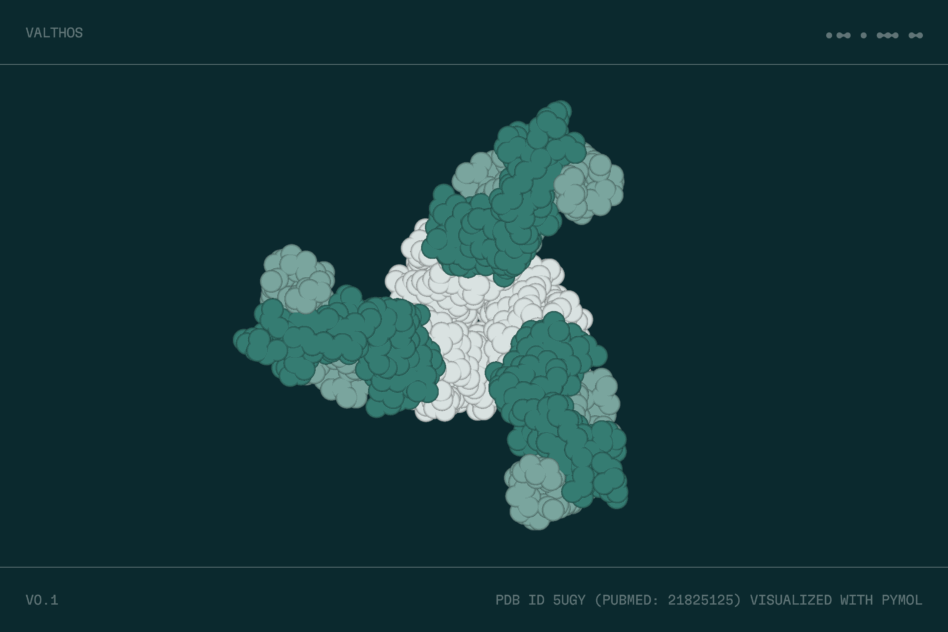We talk a whole lot about the hardware and software that enable warfighting in this newsletter, but there is a whole other corner of defense that we haven’t shed a lot of light on: biosecurity.
But perhaps it’s time we paid this sci-fi-scary corner of the defense tech world a little bit more attention. On Friday, biosecurity software startup Valthos came out of stealth with $30M in funding, a whole slate of big-time backers, including OpenAI, Founders Fund, and Lux Capital, and a promise to save us all from AI-engineered bioweapons.
“Today, it’s faster to weaponize biology than to advance new cures,” the company wrote in a blog post. “Leaders in AI have identified this as one of the largest threats of our time. Our future hangs in the balance.”
The company says its tech is here to help. Here’s hoping.
Keep it in the family: Before we get into the biosecurity context of nightmares, a bit more about Valthos.
If we’ve learned one thing from funds like Forward Deployed VC and companies like Adyton and Gallatin, it’s that the Palantir mafia likes to stick together. Valthos is yet another case in point.
The company’s nine-person team—helmed by co-founder and CEO Kathleen McMahon—boasts alumni from Palantir, DeepMind, the Broad Institute, and the Arc Institute, and says they’re working towards a “future where any threat to human health can be immediately identified and neutralized, whether the origin is external or within our own bodies.”
“We build AI systems to rapidly characterize biological sequences and update medicines in real time,” the company wrote in its launch announcement. “This strengthens biodefense today and lays the groundwork for the adaptive, precision therapeutics of tomorrow.”
Unseen threats: Now, why is this kind of thing so exciting to so many investors? Well, because biosecurity is kind of the next (unseen) frontier of defense.
If you don’t spend a lot of time thinking about this kind of thing, we don’t blame you. It’s, like, incredibly scary. But bioterrorism and biological warfare have become a major threat—especially with the rise of AI.
- Back in 2023, the US DoD released its first-ever Biodefense Posture Review, which stated that “multiple nations have pursued clandestine biological weapons programs, and a number of terrorist groups have sought to acquire biological weapons. In addition, advances in biotechnology, including synthetic biology, could make it easier to develop and use biological agents as weapons.”
- Trump’s AI action plan in July stated that, “AI will unlock nearly limitless potential in biology. . . . At the same time, it could create new pathways for malicious actors to synthesize harmful pathogens and other biomolecules.”
- A CSIS report from this summer found that “popular large language models (LLMs) could soon drastically lower the informational barriers for planning and executing biological attacks.”
- The National Security Commission on Emerging Biotechnology (chaired by Sen. Todd Young) stated in a report earlier this year that AI plus biotechnology “will transform everything from the way we defend and build our nation to how we nourish and provide care for Americans.” The commission also said that China had pulled ahead in terms of biotech.
- And a report from the Center for AI Safety from last year stated that “the same [AI] capabilities that are driving everything from drug discovery to diagnostic techniques could also revolutionize bioterrorism.”
Basically, AI has completely changed biotech and its creepier cousin, biological warfare. The same AI models that discover life-saving drugs can also be used to engineer deadly viruses and toxins, and they can do so at a speed that makes these threats near-impossible to detect.
In the weeds: That’s where Valthos says it will come in.
The good news: There’s a ton of biological data out there—in stuff like wastewater and, well, the air we breathe—that can help detect threats before they kill us all. The bad news: that data is messy and massive, and with more than 8B humans constantly on the move, it’s not exactly easy to sift through.
- Valthos says it will build AI-powered tools that can pull together all of this biological data from government and commercial sources and detect bio threats before they become, say, global pandemics that keep us all locked in our houses for a year.
- The company will also work with pharmaceutical companies to build and distribute “medical countermeasures” (i.e., engineered counter-threats and treatments) that can help treat threats that do emerge before they proliferate. A little bit of defense, a little bit of offense.
“The only way to deter an attack is to know when it’s happening, update countermeasures, and deploy them fast,” McMahon told Bloomberg.
Among friends: Valthos isn’t the only company doing this kind of work, but it certainly has some of the flashiest backers.
- Gingko Bioworks has been around since 2008 and (through their biosecurity division) runs large-scale pathogen monitoring and DNA synthesis screening for DHS, DoD, and beyond.
- UK startup Portal Biotech is backed by the NATO Innovation Fund and builds portable sensors for early detection of engineered pathogens.
- Lux Capital-backed EvolutionaryScale isn’t squarely in the threat-detection game, but builds “large language models for biology” that can “read and write proteins” to speed up scientific discovery and synthetic biology.
Now, let’s all cross our fingers and toes that they’re working very hard to prevent the next COVID. Who wants to bet that biosecurity might just be the new, hot thing?

